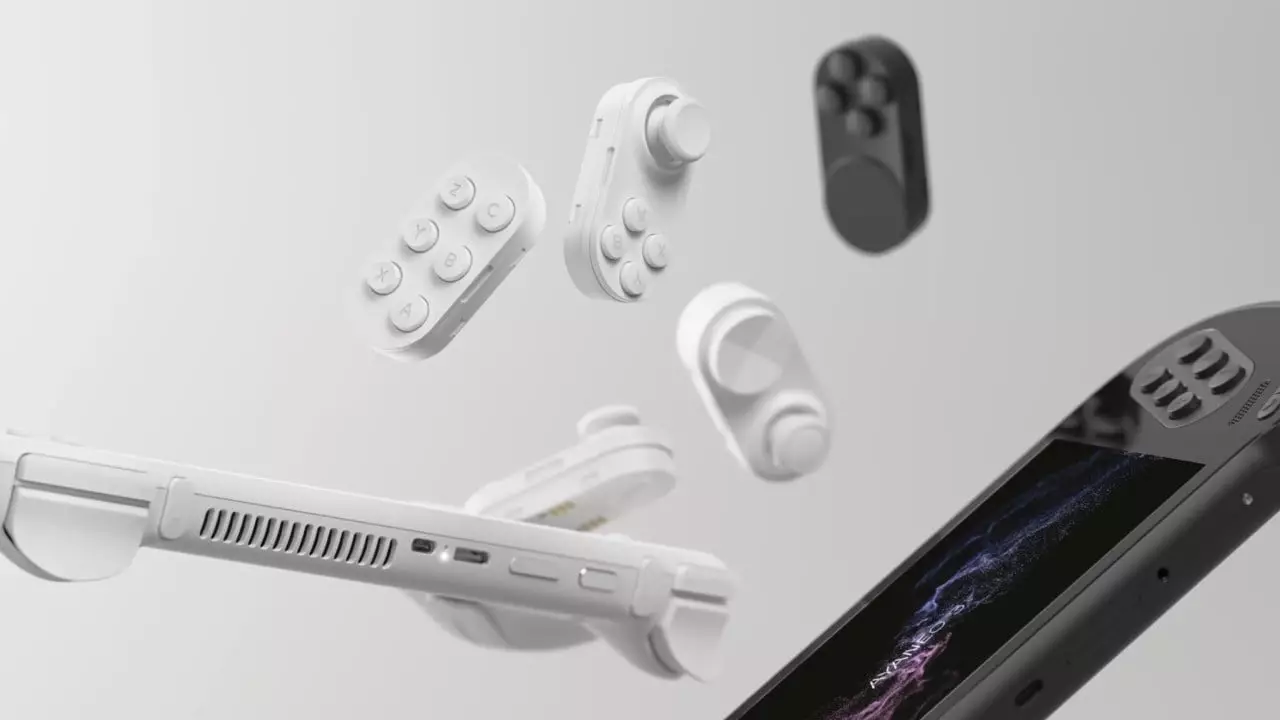As we eagerly anticipate the unveiling of the next-generation Nintendo Switch, colloquially referred to as Switch 2, speculations abound as to what innovations this console might bring. It’s likely that Nintendo will maintain the fundamental design of its predecessor—a sleek tablet with detachable controllers. However, the gaming landscape is evolving, and with it, player demands for customization and personalization in their gaming experiences. This shift has been highlighted by recent developments from manufacturers like AYANEO, which presents a compelling case for Nintendo to think beyond its established framework.
The recent reveal of AYANEO’s latest handheld gaming device, the AYANEO 3, introduces an intriguing concept called Magic Modules. This feature allows players to customize their control scheme by swapping out different modules, including configurable analogue sticks and specialized options like a D-pad or six-button layout. This customization capability could revolutionize how players interact with their games, potentially enhancing playability and user experience, particularly in genres requiring precision, such as fighting games.
Though it can be argued that similar ideas have been presented in the past—like Turtle Beach’s Stealth Pivot controller—AYANEO’s approach seems to encapsulate a broader vision of optionality and flexibility within handheld gaming. Given that Nintendo has historically attracted a diverse player base, including those who favor casual gaming and those who partake in competitive play, this level of customization could appeal to a wider audience, enhancing the console’s appeal.
Nintendo’s History of Customization
Nintendo is no stranger to customization options; it has often partnered with third-party manufacturers like Hori to create specialized game accessories, such as the unique D-pad Joy-Con for the original Switch. However, it’s worth noting that the exploration of these alternative controllers hasn’t been fully realized within the Switch ecosystem. There seems to be a missed opportunity for expanding options in a more integrated and accessible way, which could be an avenue for the upcoming console to capitalize on.
Envisioning a scenario where Nintendo incorporates a system akin to AYANEO’s Magic Modules could open the floodgates for creativity among developers and players alike. Imagine a Nintendo console that supports modular design at its core, allowing users to adapt their gameplay experience to their personal preferences. This innovative leap could not only set Switch 2 distinctively apart from current competitors but also foster a community of gamers who appreciate their ability to tailor their hardware for specific titles or genres.
As anticipation builds, one must ponder: will Nintendo take cues from these advanced features to enhance the Switch 2 experience? By stepping beyond traditional designs and integrating dynamic customizations, Nintendo has the potential to redefine what it means to play a handheld console. The gaming community certainly appears ready for such developments, as players increasingly seek devices that offer them a personal touch and adaptability in their gaming journeys.
While the Switch 2 may hold true to its origins, the time is ripe for Nintendo to embrace innovations like modular controls and customization features. Doing so could not only elevate user experience but could establish the brand as a pioneering force in the evolving realm of handheld gaming.

